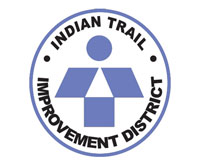The Indian Trail Improvement District Board of Supervisors has approved an agreement with the Treasure Coast Regional Planning Council to provide consulting services on planning issues, such as roads and development.
Treasure Coast is now in the process of gathering data to provide information, which will be reviewed and processed over the next year.
“We need a planning document that’s long term and short term that allows us to have a vision of where we’re going, what the community wants, what the district needs and how to address all the different issues we’re being faced with,” ITID President Betty Argue told the Town-Crier. “While we’ve been doing traffic studies and traffic calming, there isn’t one overall planning document.”
The absence of a planning document presents difficulty when trying to develop a budget because it becomes more reactionary than visionary, she said.
“Having a master plan becomes the goal that you’re working toward, and it allows you to map it out how you’re going to get there,” Argue said, explaining that the plan will be broken down into 25 years, five years and one year. “You’re always working toward and able to evaluate where you’re at and what you need to do. It’s going to be adjusted along the way… but you have something to work toward.”
She said that ITID has been working in a piecemeal fashion to fix issues such as culverts, but there is no overall plan to get the project done.
“There’s kind of an ad hoc plan there that we’ve got this many to do, and it’s going to take this long to get it done at this pace,” Argue explained. “Now we’re trying to bring form into the goals the community and the board in terms of how quickly we want to get this done.”
Treasure Coast Director of Strategic Development & Policy Kim Delaney is in the process of gathering existing information so that it can be organized into one document.
“She is pulling together everything we’ve done already so that we’re not reinventing the wheel,” Argue said. “She’s working with our traffic engineer, our engineer and our staff, including input from the board. From that, she’s going to come up with a formulation — an outline of what we need from the community.”
Argue said having one planning document will help resolve residents’ questions about when projects will be addressed.
“We don’t have any road paving plan other than the roads that are paved already,” she said. “Realtors will be telling people all the time that roads are going to be paved or this is going to happen, but with this kind of master plan, people will have it to refer to.”
She said most municipalities are required to have a master plan, but ITID has never had to do it.
“We should have been doing it with respect to our infrastructure, in my opinion,” Argue said, pointing out that the county is largely responsible for planning in the district, but ITID also has specific responsibilities that are not laid out clearly. “The county is not responsible for our roads, and they’re not responsible for our drainage infrastructure.”
Although the Treasure Coast Regional Planning Council reviews all regional plans in its jurisdiction, Argue pointed out that the nonprofit agency also provides consulting for a fee. In ITID’s case, that’s $117,500 for work to be conducted through July 2020, including public input meetings that will be planned.
“They’re not making a profit off of it,” she said. “It’s a lot of money, but if we were to hire an outside planning agency, we’d be paying fees that are a lot higher.”
Argue said that Traffic Engineer Joe Capra mentioned Treasure Coast when she asked him for references for a consultant.
“One of the things I’ve been pushing for ever since I’ve been on the board is planning,” she said. “He said, ‘I’ve done a lot of work with the Treasure Coast Regional Planning Council and they may be the most viable opportunity for you.’”
Argue added that some sources of alternative funding may be available to offset the cost, but the board had to underwrite the cost initially for budgeting purposes.
“Everybody on the board agrees that we need some sort of plan that can be used by future boards when they come in,” she said. “That way you don’t have to recreate the wheel every time a new person or board comes in. It gives some guidance and allows us to know where we’re going and what is it going to cost us. It also speaks to your budgeting and your overall goals.”
The plan will also present a guideline that the board can follow to stay on course for large projects so they can be budgeted incrementally, such as park and equestrian trail improvements.
“Equestrian trails are always something that ends up getting put off, and we never give out the resources to it because there is always something else,” Argue said. “If you make it a priority and start making incremental steps, then you’re actually accomplishing something, rather than five years down the road, you haven’t done anything.”
She said part of the discussion should be with neighboring entities with common interests, such as the Town of Loxahatchee Groves, which has also shown an interest in improving connectivity of equestrian trails.








